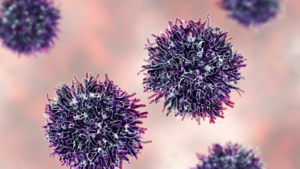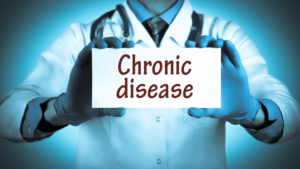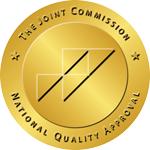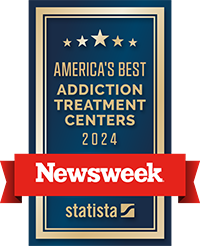Alcoholism, often known as alcohol use disorder or alcoholism, is a chronic disease characterized by a person’s physical and/or psychological dependence on alcohol. Alcohol use disorder is characterized by a drinking compulsion. Both a person’s personal and professional lives could suffer as a result. We’ll examine how and why alcohol consumption disorder is a disease in this section and why it’s seen as a chronic condition. We want to provide information and tools for people who are struggling with alcohol use and their loved ones who might be looking for assistance and guidance. It’s important to realize that alcoholism can be treated and that many options are accessible to those who want to overcome addiction and sustain sobriety.
What Is Alcohol Use Disorder?
Alcohol use disorder is a chronic condition characterized by a physical and psychological dependence on drinking. Some common symptoms of alcohol use disorder include:
- Regularly drinking more than intended.
- Experiencing cravings or a strong desire to drink.
- Having difficulty reducing or stopping alcohol consumption.
Other indicators of alcohol use disorder include ignoring obligations and having drinking-related issues in personal or professional relationships. Another indication of alcohol consumption disorder is carrying on with drinking while experiencing adverse effects on one’s physical or mental health.
About 14.5 million adults in the US suffer from alcohol use disorder, according to the National Institute on Alcohol Abuse and Alcoholism. Abuse of alcohol can result in many undesirable outcomes, including mishaps, injuries, and health issues like pancreatitis and liver disease, a severe public health issue. To conquer their addiction and achieve long-term recovery, persons who struggle with alcohol misuse must seek therapy and assistance.
What is a chronic disease?
A chronic disease is a long-lasting condition that can be controlled but not cured. In general, a condition is considered chronic if it lasts for one year or longer and requires ongoing medical attention or limits daily activities or both. Chronic diseases such as heart disease, cancer, and diabetes are the leading causes of death and disability worldwide.
Chronic diseases tend to become more common with age. The leading chronic diseases in developed countries include arthritis, cardiovascular diseases such as heart attacks and stroke, cancer such as breast and colon cancer, type 2 diabetes, obesity, and chronic respiratory diseases such as asthma and COPD. The CDC defines substance use disorder as a chronic disease.
Chronic Diseases are the leading drivers of the nation’s $4.1 trillion in annual health care costs.
Chronic diseases can be debilitating and require long-term care and support, which can lead to significant healthcare costs. They also can impact a person’s quality of life, and can cause physical disability and emotional distress.
The cause of many chronic diseases is linked to lifestyle factors such as unhealthy diets, lack of physical activity, smoking, and excessive alcohol use. However, genetic factors can also play a significant role. Many chronic diseases are preventable by living a healthy lifestyle, getting regular check-ups, and managing risk factors.
Is Alcohol Use Disorder Is A Chronic Disease?
Alcohol use disorder meets the criteria for a disease in several ways. First, it has clear and identifiable causes, including both genetic and environmental factors. For instance, several studies have revealed that a person’s family history, as well as their mental health, stress levels, and social milieu, affect their chance of developing alcoholism. Additionally, alcohol use disorder has a range of symptoms that can impact a person’s physical and psychological health and daily functioning. These symptoms may include a compulsive need to drink, difficulty reducing or stopping alcohol consumption, and negative consequences such as neglecting responsibilities or experiencing problems in relationships due to drinking.
In 1992, the AMA published the following definition of alcoholism, after a thorough review and research from a specialized team of 23 members from the National Council on Alcoholism and Drug Dependence along with the American Society of Addiction Medicine performed a comprehensive, two-year study to clarify the term “alcoholism.” They aimed to collaboratively devise a refined definition that is scientifically valid, clinically applicable, and easily comprehensible to the public. As a result, they reached a consensus to define “alcoholism” as a primary and chronic illness, influenced by genetic, psychosocial, and environmental factors. The progression of this disease could be relentless and fatal. It is distinguished by lack of control over drinking, an obsession with alcohol, continued use despite harmful effects, and flawed thinking patterns, particularly denial. These symptoms could either persist or occur intermittently.
“Alcoholism is a primary, chronic disease with genetic, psychosocial, and environmental factors influencing its development and manifestations. The disease is often progressive and fatal. It is characterized by continuous or periodic: impaired control over drinking, preoccupation with the drug alcohol, use of alcohol despite adverse consequences, and distortions in thinking, most notably denial.”

The negative impact of alcohol use disorder on health and functioning is another critical factor that meets the criteria for a disease. Untreated alcoholism can lead to serious health problems such as liver disease, pancreatitis, and an increased risk of certain cancers. It can also interfere with a person’s ability to function in their personal and professional life, leading to problems in relationships, financial difficulties, and legal issues. Overall, alcohol use disorder meets the criteria for a disease due to its identifiable causes, range of symptoms, and negative impact on health and functioning.
Why Alcohol Use Disorder Is Considered A Chronic Disease?

Alcohol consumption disorder is a chronic disease, which means it is a persistent condition that needs continuing care. Alcoholism lacks a cure, just like other chronic disorders like diabetes and heart disease. Nevertheless, it can be controlled with medication and lifestyle changes. For many battling alcoholism, rehabilitation is a lifelong process that demands dedication and constant support.
The fact that alcohol consumption disorder is a chronic condition necessitates continuing care. Alcoholism recovery is a journey that requires ongoing support and supervision rather than a one-time occurrence. Therapy, support groups, and medications to assist in managing urges and avoiding relapse may be a part of this. To achieve and maintain long-lasting recovery from alcohol misuse, much like other chronic disorders, a commitment to continued treatment and management is necessary. People with alcohol use disorders can improve their chances of making a full recovery by taking the time to learn about their treatment options and the value of ongoing support.
What Are Genetics Role In Alcohol Use Disorder?
Genetics and other factors play a significant role in the development of alcohol use disorder. Research has shown that a person’s risk for developing alcoholism is influenced by their family history, as well as their mental health, stress levels, and social environment. Therefore, genetics can play increase a person’s risk for developing alcohol abuse; other factors, such as mental health disorders and social stressors, can also contribute to the development of the disease.
Final Thoughts On The Disease Of Alcoholism
Viewing alcohol use disorder as a chronic disease has several benefits, including destigmatization and increased access to treatment. Suppose people who abuse alcohol are aware that alcoholism is a chronic disease. In that case, they may feel more comfortable asking for assistance and be more willing to seek treatment. Knowing alcoholism is a treatable chronic disease may also help remove the stigma typically associated with addiction because it’s regarded similarly to other chronic conditions like diabetes and heart disease. Alcohol use disorder may be more likely to be covered by insurance and other financial resources if it is identified as an illness. Treating alcohol use disorder as an illness can benefit individuals who are abusing alcohol as well as those who care about them. It can also enhance the likelihood that treatment will be effective.

Alcohol use disorder is a chronic illness characterized by a physical and psychological dependence on alcohol. It is crucial to recognize alcoholism as a chronic disease that may be addressed if you or a loved one are struggling with it. Don’t let the stigma surrounding addiction prevent you from receiving the help and support you need. Keep in mind that, with the correct care and support, you can overcome Alcohol use disorder and reach long-term sobriety. Don’t hesitate to reach out to The Ridge Ohio, if you or a loved one are ready for change. Contact us at 513-457-7963 to start the journey, we are here for you!
Sources:
- Edwards, Griffith, and Milton Gross. “Alcohol dependence: provisional description of a clinical syndrome.” British Medical Journal, vol. 301, no. 6758, 1990, pp. 1058–1061. PubMed, https://pubmed.ncbi.nlm.nih.gov/1501306/.
- American Medical Association. “Definition of Alcoholism.” Journal of the American Medical Association, vol. 268, no. 8, 1992, pp. 1012–1014. JAMA Network, https://jamanetwork.com/journals/jama/article-abstract/399449.
- National Institute on Alcohol Abuse and Alcoholism. “Alcohol Facts and Statistics.” NIAAA, 2023, https://www.niaaa.nih.gov/publications/brochures-and-fact-sheets/alcohol-facts-and-statistics.


